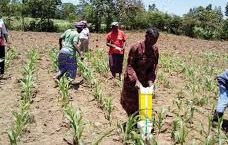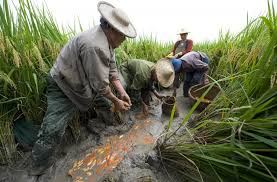The concept of sustainable livelihood was first introduced by the Brundtland Commission on Environment and Development, and the 1992 United Nations Conference on Environment and Development expanded it to reflect the advocacy on poverty eradication.
The concept of sustainable livelihood is an effort to go beyond the conventional definitions and approaches to poverty eradication.
Sustainable livelihood is regarded as the ability to cope with and recover from unexpected shocks as well as enhancing current and future capabilities (UN-ESCAP, 2008).
Sustainable livelihood is based on capabilities, assets (both material and social resources), and activities required for a living (DFID, 2019).
Sustainable livelihood, however, provides access to basic needs, opportunity to thrive, and a sense of identity and belonging (Science Direct, 2019).
Livelihood can only be pronounced to be sustainable when it can cope with and recover from the stresses and shocks; not only this, but also when it is consistently able to maintain or enhance its capabilities and assets (FAO, 2014).
Livelihood should not undermine the natural resource base; otherwise, it would not be regarded as sustainable.
Sustainable livelihood, therefore, can be defined as a means of providing for living in a manner that can withstand unforeseen adverse conditions and does not jeopardise the future generations’ ability to provide for their needs.
Many authors have worked and argued in different ways that the sustainability of rural livelihoods should form the basis for improved rural development and poverty alleviation (Batterbury, 2016).
Read Also: Small Ruminants: Sheep and Goats Classification
Definitions and Dimensions of Livelihood in Agricultural Development

Livelihood has been defined in various dimensions by different authors. Bennell (2000) defined livelihood as comprising the capabilities, assets, and activities required for a means of living.
A livelihood is sustainable when it can cope with and recover from stresses and shocks and maintain or enhance its capabilities and assets both now and in the future without undermining the natural resource base (Bingen, 2000).
However, household livelihood is secured through adequate and sustainable access to income and resources to meet basic needs (Frankenberger et al., 2000).
The International Federation of Red Cross and Red Crescent (IFRC) (2019) defined livelihood as those acts put together to earn a living and which encompass people’s capabilities, assets, income, and activities for securing the necessities of life.
Moreover, livelihood entails those activities that are performed to live for a given life span while securing water, food, fodder, shelter, clothing, medicine, and the capacity to acquire the aforementioned necessities of life.
This can be achieved either by working as an individual or as a group to meet self-requirements and those of the entire household on a sustainable basis but with dignity.
Social scientists have extended the concept of livelihood to include the total way of living. This means that an individual, family, or other social group must engage in activities that yield income or resources that can be used or exchanged to satisfy other needs.
Butler and Mazur (2004) defined livelihood as assets, activities, and access to both to ensure a living is gained by an individual or household.
In other words, livelihood here can be summarily defined as how an individual provides for living or needs in a decent, dignified, and sustainable manner.
Chambers and Conway (1991) stated that livelihood comprises the capabilities, assets (stores, resources, claims, and access), and activities required for a means of living.
Read Also: Complete Guide on Sheep and Goats Production
Sustainable Agriculture as a Foundation for Livelihood Protection

It has, therefore, become very important to protect, manage, and govern the environment for livelihoods to be sustainable, and agriculture is the right channel to achieve this objective.
Agricultural production ought to be sustainable even though it is being exposed to risks as a result of climate change, overexploitation, overuse, and direct loss of habitat and species.
Changes in land use and biodiversity are mostly caused by agriculture, which may lead to underground water depletion, agrochemical pollution, soil exhaustion, and global climate change.
The conversion of natural habitats for the production of food, fibre, timber, fuel, and animal feed has been the main driver of biodiversity loss (WWF, 2010).
Hence, it is time to put sustainable agriculture into practice to overcome the loss of biodiversity and the severity of global warming.
Do you have any questions, suggestions, or contributions? If so, please feel free to use the comment box below to share your thoughts. We also encourage you to kindly share this information with others who might benefit from it. Since we can’t reach everyone at once, we truly appreciate your help in spreading the word. Thank you so much for your support and for sharing!

